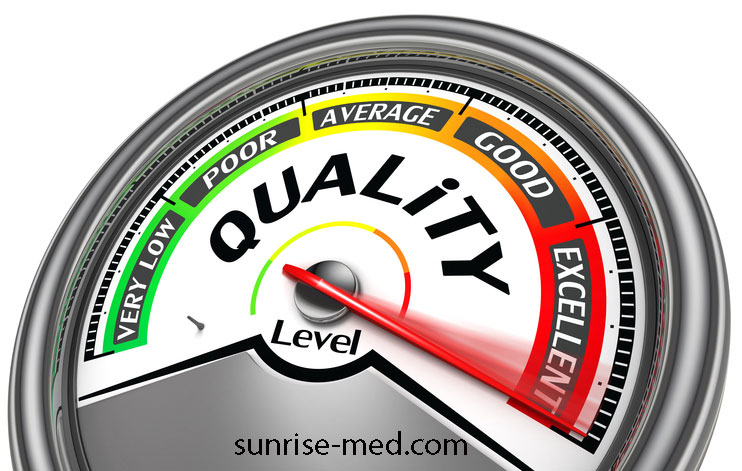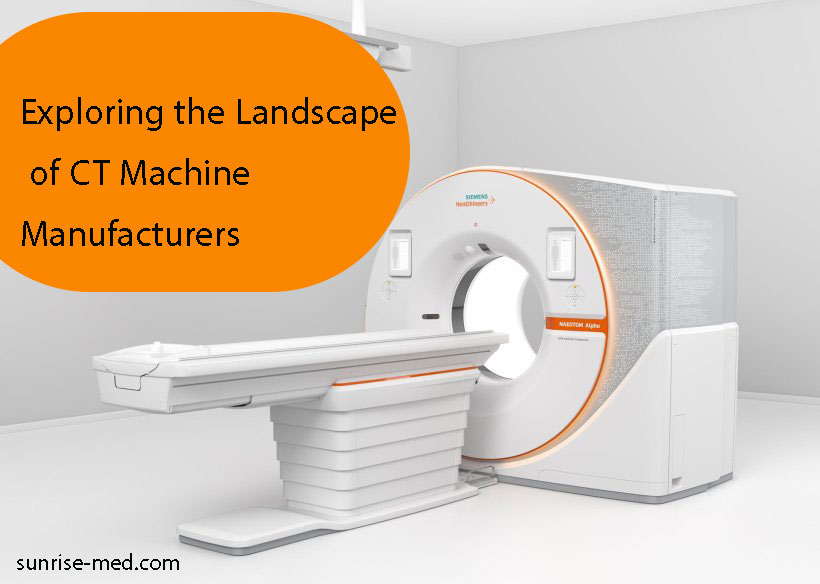Computed Tomography (CT) imaging plays a vital role in modern healthcare, offering detailed cross-sectional images of the body’s internal structures for diagnostic and therapeutic purposes. While the acquisition cost of new CT equipment can be substantial, many healthcare facilities opt for used CT equipment as a cost-effective alternative. In this comprehensive analysis, we delve into the market for used CT equipment, exploring its advantages, considerations, procurement process, and best practices for healthcare providers.
1. Advantages of Used CT Equipment
Investing in used CT equipment offers several advantages for healthcare facilities, including:
Cost Savings

One of the primary advantages of purchasing used CT equipment is cost savings. Used equipment is typically available at a lower price point compared to new systems, allowing healthcare facilities to acquire advanced imaging technology while staying within budget constraints.
Upfront Availability
Used CT equipment is readily available for immediate purchase, unlike new systems that may have longer lead times for manufacturing, delivery, and installation. This enables healthcare facilities to expedite the procurement process and deploy imaging services more quickly.
Enhanced Affordability
Used CT equipment allows healthcare facilities to access advanced imaging capabilities that may have been financially prohibitive with new systems. By acquiring pre-owned equipment, facilities can invest in higher-end models or additional imaging modalities to meet evolving clinical needs.
Flexibility and Customization
Used CT equipment offers flexibility in terms of system specifications, configurations, and accessories. Healthcare facilities can tailor their equipment purchases to specific clinical requirements, workflow preferences, and budget considerations, customizing the imaging solution to their unique needs.
Established Performance
Many used CT systems have a proven track record of reliability, performance, and clinical utility. Facilities can leverage the experience and feedback of previous users to assess the quality, functionality, and suitability of used equipment for their imaging needs.
Upgradable Options
Some used CT equipment may be eligible for upgrades, enhancements, or software updates to extend their lifespan and enhance their capabilities. Upgradable options provide scalability and future-proofing for healthcare facilities, allowing them to adapt to evolving technology and clinical demands.
Overall, investing in used CT equipment offers an attractive value proposition for healthcare facilities seeking to optimize their imaging capabilities while maximizing cost-efficiency and resource utilization.
2. Considerations for Purchasing Used CT Equipment
While used CT equipment offers compelling advantages, healthcare facilities must carefully consider several factors before making a purchase decision:
Equipment Condition
Assessing the condition of used CT equipment is critical to ensure its reliability, performance, and longevity. Facilities should conduct thorough inspections, evaluations, and testing procedures to verify the operational status, functionality, and cosmetic appearance of the equipment.
Service History
Reviewing the service history, maintenance records, and uptime data of used CT equipment provides insights into its maintenance practices, service intervals, and overall reliability. Facilities should request documentation from the seller or service provider to assess the equipment’s maintenance history and performance.
Warranty and Support
Understanding the warranty coverage, service agreements, and support options for used CT equipment is essential for mitigating risks and ensuring ongoing serviceability. Facilities should inquire about warranty extensions, service contracts, and technical support availability from the seller or manufacturer.
Compatibility and Integration
Compatibility with existing infrastructure, software platforms, and workflow systems is crucial when integrating used CT equipment into healthcare facilities. Facilities should evaluate compatibility requirements, data transfer protocols, and interoperability standards to ensure seamless integration with existing technology.
Regulatory Compliance
Ensuring regulatory compliance with applicable standards, guidelines, and regulations is paramount when purchasing used CT equipment. Facilities should verify the equipment’s compliance status, certification documentation, and adherence to regulatory requirements for safety, performance, and quality assurance.
Future Expansion and Upgrades
Considering future expansion plans, upgrade options, and technology advancements is important when investing in used CT equipment. Facilities should assess the equipment’s scalability, upgradability, and compatibility with emerging technologies to support long-term growth and innovation.
Financial Considerations
Evaluating the total cost of ownership, financing options, and return on investment (ROI) is essential for financial planning and budgeting. Facilities should conduct cost-benefit analyses, negotiate favorable pricing terms, and explore financing solutions to optimize their investment in used CT equipment.
By carefully considering these factors and conducting due diligence, healthcare facilities can make informed decisions when purchasing used CT equipment, minimizing risks and maximizing value for their imaging investments.
3. Procurement Process for Used CT Equipment
The procurement process for used CT equipment involves several key steps, including:
Needs Assessment
Identify the clinical requirements, imaging needs, and budget constraints of the healthcare facility to determine the specifications and configurations of the desired CT equipment.
Market Research
Conduct comprehensive market research to identify reputable sellers, certified resellers, and authorized dealers offering used CT equipment. Compare equipment options, pricing models, and service offerings to evaluate the best fit for the facility’s needs.
Equipment Evaluation
Evaluate the condition, performance, and compatibility of used CT equipment through on-site inspections, equipment demonstrations, and test scans. Verify equipment specifications, software versions, and accessory compatibility to ensure alignment with facility requirements.
Negotiation and Contracting
Negotiate pricing, warranty coverage, service agreements, and payment terms with the seller or dealer to reach a mutually beneficial agreement. Review and finalize contractual terms, purchase agreements, and documentation to formalize the equipment purchase.
Installation and Commissioning
Coordinate the logistics, site preparation, and installation requirements for the used CT equipment with the seller or dealer. Schedule installation services, equipment delivery, and commissioning activities to ensure a smooth transition and successful integration into the healthcare facility.
Training and Education
Provide comprehensive training and education for clinical staff, technologists, and radiologists on the operation, maintenance, and safety protocols of the used CT equipment. Ensure proficiency, competency, and compliance with regulatory guidelines through hands-on training sessions and continuing education programs.
Quality Assurance and Maintenance

Implement quality assurance protocols, preventive maintenance schedules, and performance monitoring procedures to uphold the reliability, safety, and performance of the used CT equipment. Establish regular service intervals, calibration checks, and quality control measures to maintain optimal imaging quality and operational efficiency.
By following these steps and best practices, healthcare facilities can navigate the procurement process for used CT equipment effectively,ensuring successful acquisition, integration, and utilization of imaging resources.
4. Best Practices for Managing Used CT Equipment
Managing used CT equipment requires proactive maintenance, quality assurance, and lifecycle management strategies to optimize performance, reliability, and longevity. Key best practices for managing used CT equipment include:
Preventive Maintenance
Implement regular preventive maintenance schedules, service checks, and performance evaluations to identify and address potential issues before they escalate. Conduct routine inspections, calibration procedures, and software updates to ensure the equipment’s optimal performance and uptime.
Quality Control and Assurance
Establish comprehensive quality control measures, image quality assurance programs, and performance monitoring protocols to maintain diagnostic accuracy and consistency in CT imaging. Monitor key performance indicators, dose metrics, and image quality parameters to identify trends, deviations, and opportunities for improvement.
Equipment Upgrades and Enhancements
Stay informed about available upgrades, enhancements, and software updates for used CT equipment to maximize its capabilities and extend its lifespan. Evaluate upgrade options, compatibility requirements, and cost-effectiveness considerations to determine the feasibility of implementing upgrades.
Staff Training and Competency
Provide ongoing training, education, and competency assessments for clinical staff, technologists, and radiologists to ensure proficiency in operating, interpreting, and troubleshooting CT equipment. Offer refresher courses, hands-on workshops, and online resources to support continuous learning and skill development.
Regulatory Compliance and Accreditation
Maintain compliance with regulatory standards, accreditation requirements, and quality assurance guidelines governing CT imaging facilities. Adhere to radiation safety protocols, dose optimization principles, and patient care standards to uphold regulatory compliance and ensure patient safety.
Lifecycle Planning and Replacement
Develop a strategic lifecycle management plan for used CT equipment, considering factors such as equipment depreciation, technological obsolescence, and evolving clinical needs. Evaluate the equipment’s performance, reliability, and cost-effectiveness over time to determine optimal replacement timing and investment strategies.
Vendor Relationships and Support

Foster strong relationships with equipment vendors, service providers, and technical support teams to facilitate timely assistance, troubleshooting, and resolution of equipment-related issues. Maintain open communication channels, service contracts, and warranty coverage to access reliable support and resources when needed.
By implementing these best practices, healthcare facilities can effectively manage their used CT equipment, optimize its performance, and ensure the delivery of high-quality imaging services to patients.
Conclusion
Used CT equipment offers compelling advantages for healthcare facilities seeking cost-effective imaging solutions without compromising on performance, quality, or reliability. By carefully considering factors such as equipment condition, service history, compatibility, and regulatory compliance, facilities can make informed decisions when purchasing used CT equipment. Through proactive maintenance, quality assurance, and lifecycle management strategies, facilities can maximize the value, longevity, and performance of their used CT equipment, ensuring optimal patient care and clinical outcomes. With proper planning, procurement, and management practices, healthcare facilities can harness the benefits of used CT equipment to enhance their imaging capabilities, improve workflow efficiency, and meet the evolving needs of patients and clinicians alike.



